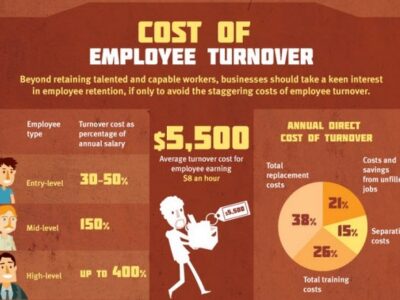Employees quitting on the spot or “rage quitting” has been in the news a lot lately. As more people grow dissatisfied with their employers, people are walking off the job in droves.
To understand why this is happening, we sat down with Allison Barr from the Center of Creative Leadership. In an episode of Team Building Saves the World, Rage Quitting, Allison identifies the root of the problem by saying:
“A lot of people realize, ‘my life is my work right now, and I don’t want that. I’m exhausted and tired of being a cog in the wheel.’ Not every industry has problematic behaviors at the workplace, but a lot do. I think people are tired of being treated as if they are just a means to make money.”
What Is Rage Quitting?
Rage quitting is when someone leaves their job in an emotionally charged way. This usually involves a spontaneous outburst of anger toward the boss or a colleague, followed by quitting on the spot. These “rage quitters” don’t punch out because they have another job lined up. Rather, they are leaving because they’ve reached their limit with their current job. Instead of giving notice or expressing their dissatisfaction in a constructive manner, they storm out, sometimes dramatically announcing their departure.
If you spend time on TikTok, you may have scrolled past a video about Noah’s NY Bagels in California. In January 2022, the company suffered a huge loss as all employees quit en masse in support of their manager who was fired. In true Gen Z fashion, the situation was documented and posted online. The video gained over 13 million views and the attention of local media networks. The caption stated “Say no to toxic management,” showing the exact reason this group decided on quitting on the spot.
Why Are Employees Quitting on the Spot?
Some employees quit on the spot because they are unhappy with their current job situation, while others may have found a new opportunity that they just can’t pass up. In other cases, it could be as simple as showing up to work and realizing that they hate their job. According to Indeed, there are some pretty common reasons that people quit their jobs:
Company Culture
Millennials seek a diverse working environment, and their demands look different from previous generations. The old workplace hierarchies don’t fly with this group. They are unwilling to stay at a company that doesn’t promote equality and value their opinion.
The days of settling for a toxic work environment because there are no other options are gone. Employees can easily pick up jobs that offer better wages and flexibility, and quitting on the spot is commonplace (although it can be detrimental to future references).
No Recognition
A lack of recognition for work is a surefire way to drive an employee to turn in their resignation on the spot. The adage “you get what you pay for” generally holds.
When it comes to a worker’s job satisfaction, money isn’t everything. What’s more, it might not even be the most important thing. Most people don’t have a problem with hard work. They just don’t like to work hard for someone who doesn’t appreciate it.
No Room For Growth
One of the biggest reasons millennials are prone to quitting on the spot is because there’s no opportunity for growth. Employers looking to retain employees must create an environment and culture that prioritizes growth. This involves allowing them to take on new projects or providing unique learning opportunities. Job growth is especially important to younger team members, but it’s also vital for middle-aged workers whose careers may have stalled.
Poor Management
The old saying “People don’t leave jobs, they leave managers” has never been more applicable than during the “Big Quit” trend. People have so many options for remote work these days. Companies everywhere seem to be hiring, so it doesn’t take much for employees to say “See ya never!” to a manager they can’t tolerate for another day.
Poor Work-Life Balance
Poor work-life balance in the workplace is another major reason employees quit their jobs. It’s also one of the biggest hurdles companies are facing when trying to recruit new talent.
Promoting a proper work-life balance is essential for any business or organization, but it can be challenging to get right. Managers need to ensure that employees are getting enough downtime, but also that work gets done and goals are met.
5 Ways to Prevent Employees from Rage Quitting
The reasons for rage quitting vary from person to person. But it’s safe to say that, in most cases, it boils down to feeling overworked and under-appreciated.
Talking about how to identify pre-quitting behavior, Allison Barr says that businesses should start looking out for patterns or “severe changes” in an employee’s attitude toward work.
“Maybe they’re calling off regularly, not responding like they used to, or showing less interest in work. If they’re interacting with customers and clients in a maybe negative way, that would be a sign as well. Leaving early and more frequently, shutting down early – those are all signs.”
According to Barr, while identifying pre-quitting behavior is important, businesses should focus more on “[employee] retention rather than giving yourself the anxiety of searching for pre-quitting behaviors.”
1. Improve Company Culture
A company’s culture is a combination of its values and attitude and how they manifest in the workplace. It can be difficult to define culture, but you know it when you feel it — and your team knows it, too.
By fostering a culture of positive work interactions, you can help your team feel more connected. Try incorporating fun activities, or even throw an event that allows everyone to let loose.
TeamBonding’s Virtual Happy Hour and Mixology activity is a popular choice for teams in need of some de-stressing and excitement after a hard day at work. This lively event filled with upbeat energy and good vibes is sure to help lift your team’s spirits if they’re in a slump.
Quickfire Olympics is another excellent way to get your team interacting and focused on relationship building as they all work to win the quick challenges.
2. Employee Recognition
People want to feel valued and respected, and they want to know that their contributions are important and make a difference. Programs that recognize employees for their contributions are a great way to retain employees, increase loyalty, and improve performance. An effective employee recognition program requires both managers and team members to be engaged.
Employee recognition is an effective motivational tool. It is one of the most powerful methods to get employees to work more reliably, more efficiently and to exhibit more loyalty to the company.
3. Build a Culture of Growth
A motivated workforce is an asset to any company. People are more productive and happy at work when they find their jobs meaningful and challenging. Identify what your employees want from their careers and then help them achieve those goals. If you can’t offer them the exact job they want, work with them to find ways they can grow within your company.
If you’re looking for a way to informally analyze team members for their strengths, check out Bridging the Divide by TeamBonding. As your team designs, decorates and brands their own bridge, you can watch for things like creativity, motivation, and leadership skills.
4. Improve Leadership Skills
Good managers and effective leaders are not mutually exclusive. Sometimes, a leader is someone who “gets things done,” but they do it in a way that doesn’t inspire those around them. These leaders can create a toxic environment, where employees feel overworked, underappreciated or even bullied.
By providing training to managers that focuses on developing leadership skills, you can motivate and retain employees who are dedicated to the company.
5. Focus on Flexibility
Workplace flexibility is a great way to support your employees in their personal and professional lives. Flexibility can also give your business a competitive advantage when attracting and retaining talent.
For some, flexibility means working from home on Fridays while others want flexibility in their hours throughout the week. The key to stopping rage quitting is to provide employees with options that work for them.
Avoid Employees Quitting on the Spot
No matter what you do as a company, some employees will eventually hit their breaking point and resort to quitting on the spot. But by building a culture that supports your team, recognizes their achievements, and appreciates that they have responsibilities and lives outside of the workplace, you are likely to avoid dealing with a dramatic rage quit.
If you’re interested in incorporating team building exercises to improve your company culture, be sure to check out our vast portfolio of uplifting and engaging team building events.
















